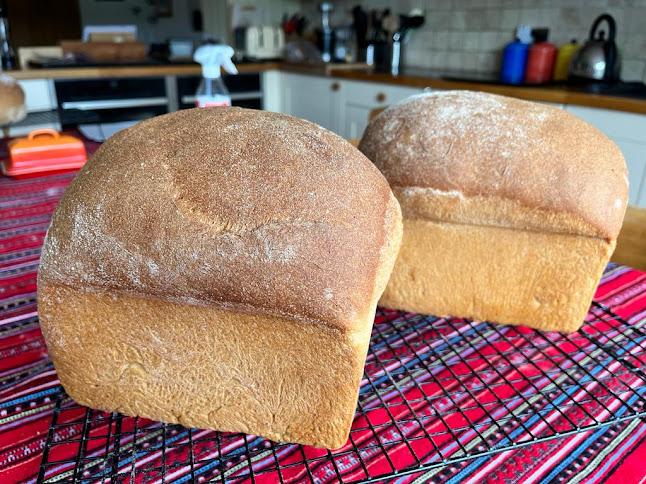Anadama from New England
Welcome to another step-by-step recipe from BreadClub20. Why not drop by our main Facebook page by clicking here.... If you like what you see and enjoy the recipe, we hope you join us by 'Liking' and 'Subscribing'.
The name 'Anadama Bread' first appeared in print back in 1915. However, it's commonly believed that it existed long before that, possibly as early as 1850, in the Maine and Massachusetts coastal communities of New England.
In the 1832 'American Frugal Housewife' (dedicated to 'those who are not ashamed of economy), Lydia Child has a recipe for an early American Brown Bread. It's thought that the Adamama loaf originated from this.
Legends abound in the bread-baking community. Did Anadama bread receive its name from the local fishing communities or the Finnish stone cutters who settled there? Who knows?
One popular story is that a local fisherman, bored of a diet of molasses and porridge, receives a variation to which flour and yeast have been added. 'Anna, Damn her' he cried...and the rest, as they say, is history!
By 1900, Anadama bread was being sold commercially by Baker Knowlton of King Street, Rockport, Mass. A team of men dressed in blue smocks delivered it via horse-drawn carts.
In 1940, The Blacksmith Shop restaurant on Mount Pleasant Street, Rockport, started baking Anadama bread. They baked 80 loaves a day until 1956 when they expanded and started distributing Anadama bread all over New England.
 |
| Blacksmith Shop Restaurant in Rockport |
Anadama bread is a blend of bread flour, cornmeal and molasses. It's a New England classic.
There are a number of web-based and book recipes for Anadama bread. In "The Legend of the Three Melissas", corn is soaked overnight in molasses. I like the idea of soaking the polenta/cornmeal prior to use to create a 'sponge'.
However, I like the way that Peter Reinhart's uses a 'corn soaker'...which is what I'm including here.
INGREDIENTS
For the overnight soak
138 gms cornmeal/polenta
240 gms tepid water
For the dough
706 gms strong bread flour
240 gms tepid water
29 gms unsalted butter
120 gms molasses
8 gms crushed sea salt
7 gms instant active yeast
METHOD
The night before...
Mix the 138 gms cornmeal with the 240 gms of tepid water.
Cover and leave overnight at room temperature.
Baking Day
Add 300 gms of the flour, water and yeast to the corn 'soaker'. Mix well. Cover and leave in a warm place for about an hour until the sponge begins to froth.
Add the remainder of the flour, the salt, the butter and the molasses and bring together to a slightly sticky and soft dough.
Knead the dough until you have a firm but pliable dough. If it is a little sticky add a very little extra flour until the stickiness disappears.
Place in a lightly-oiled bowl and cover. Allow proofing at room temperature until the dough doubles in volume.
Weigh the dough, knock it back and divide it into two.
Prepare two loaf tins.
Half-fill the tins with the dough, cover and proof at room temperature until the shoulders of the dough reach the top of the tins.
You can dust the top of the loaves with semolina or cornmeal if you so wish.
Bake at 180⁰C for 25 - 30 minutes until golden brown and hollow when tapped on the underneath.
Cool on a rack for about an hour before cutting.
Happy baking.




.jpeg)






Comments
Post a Comment